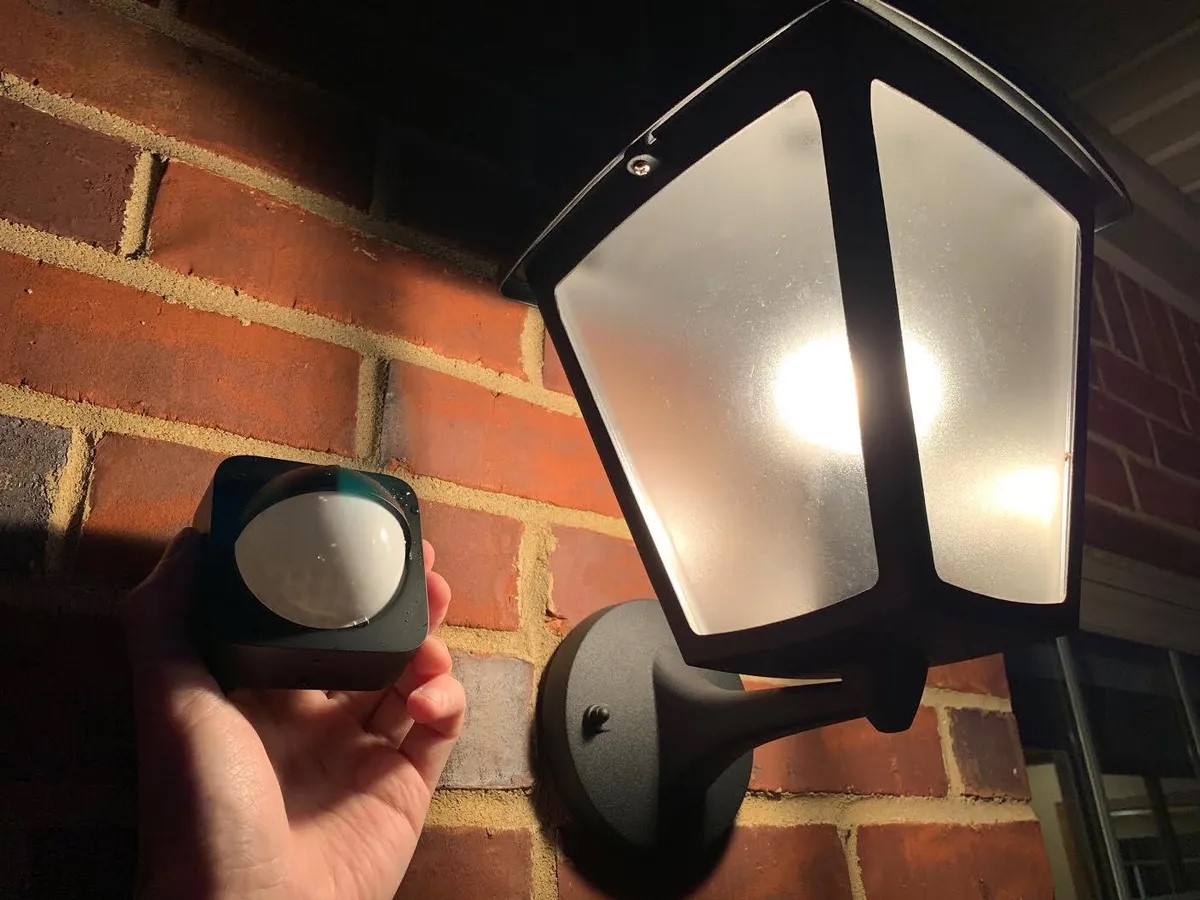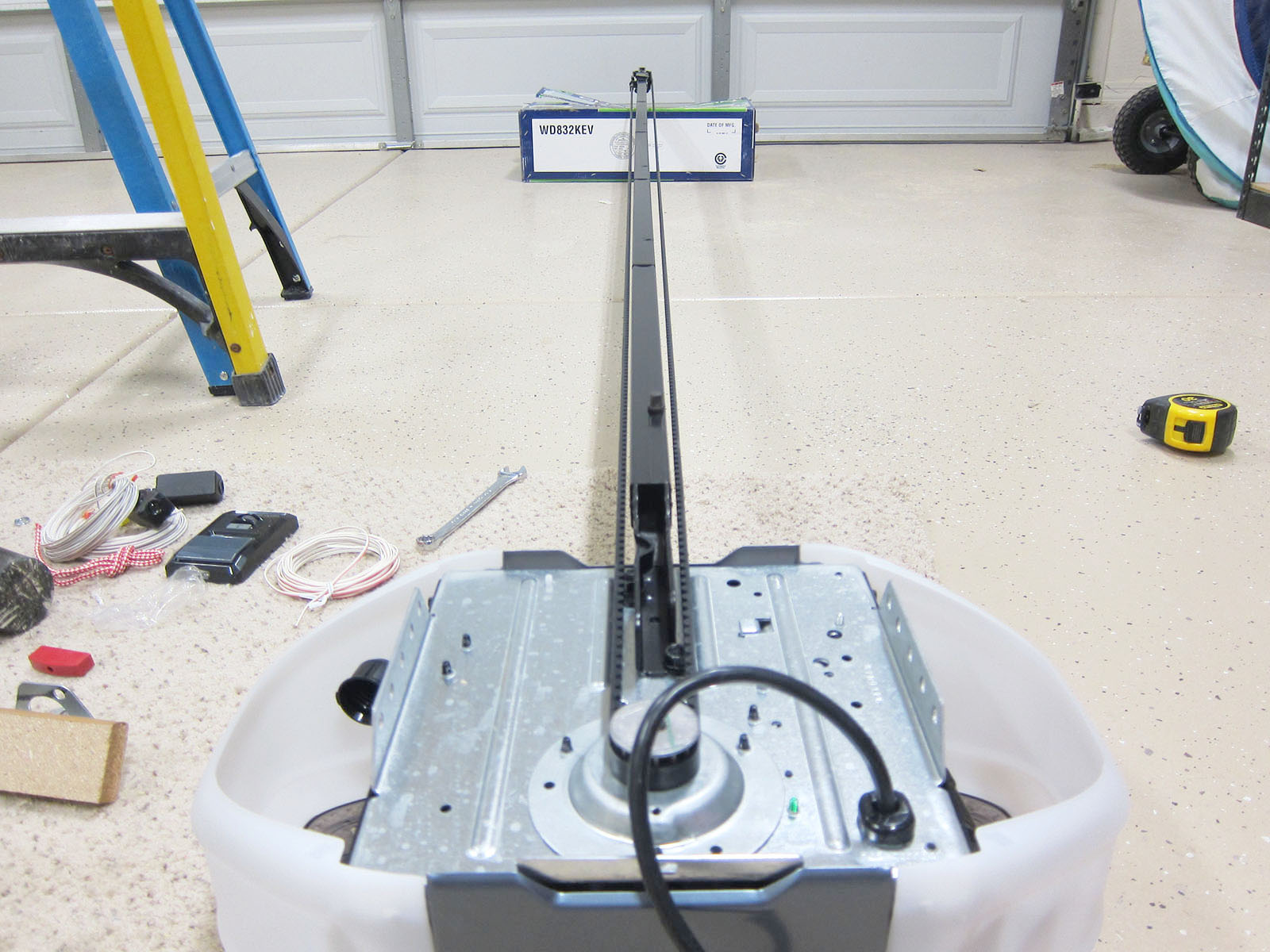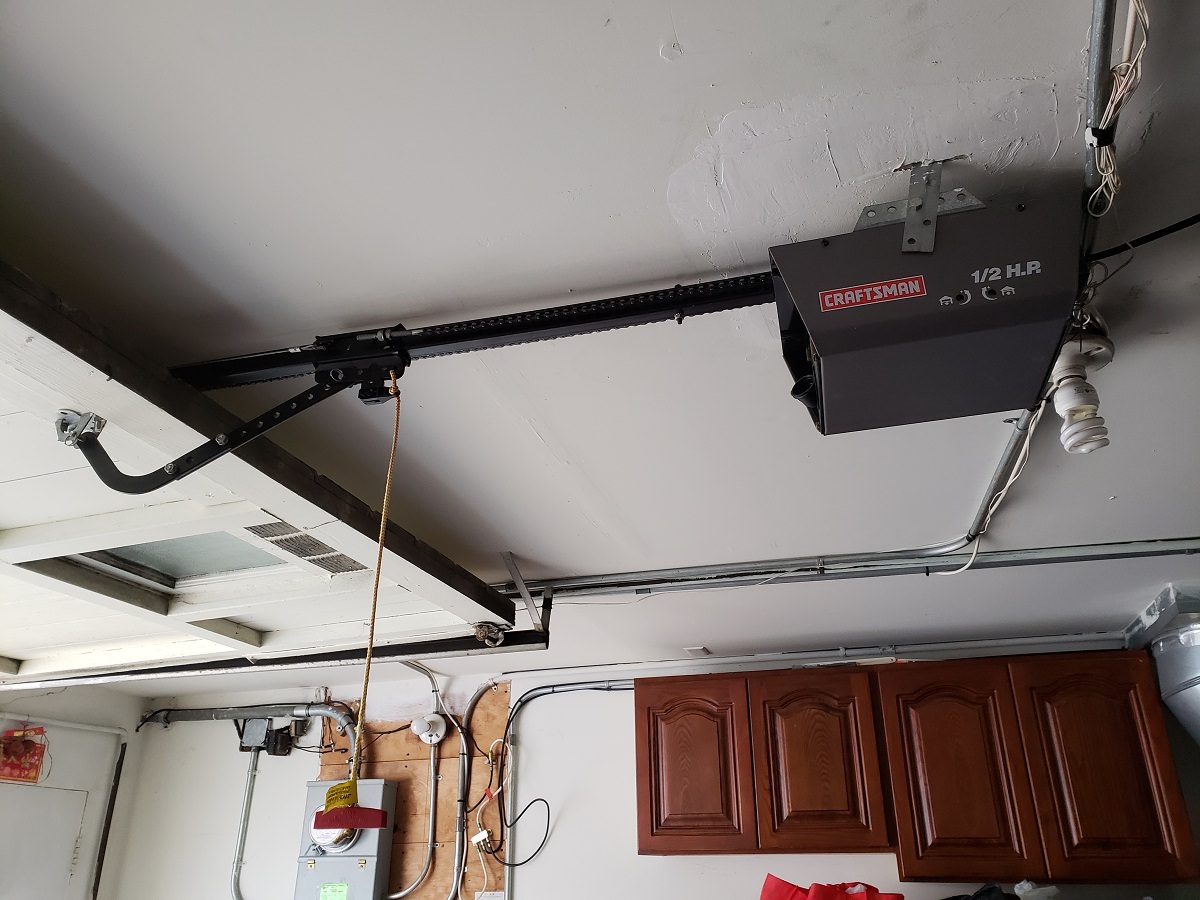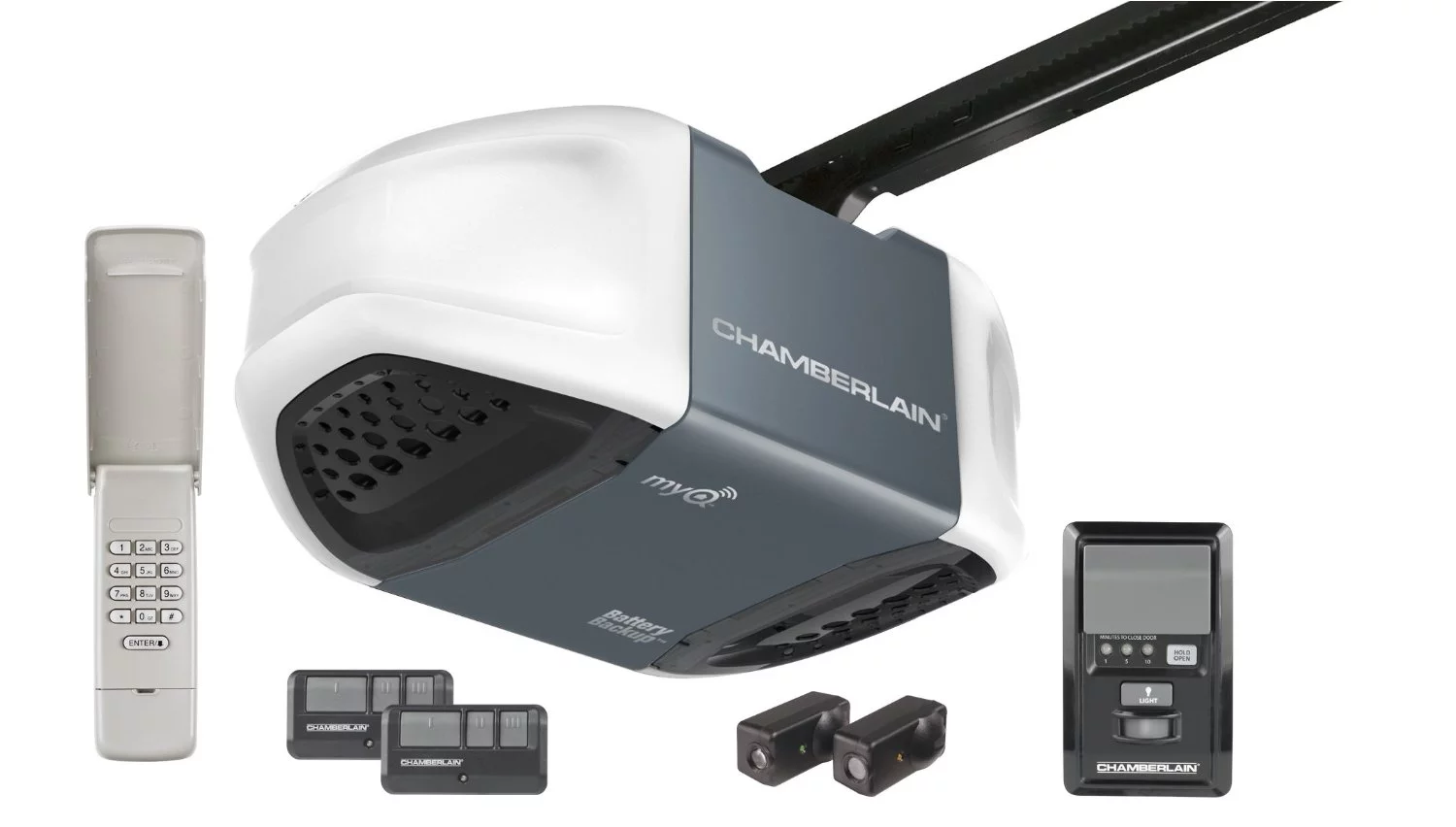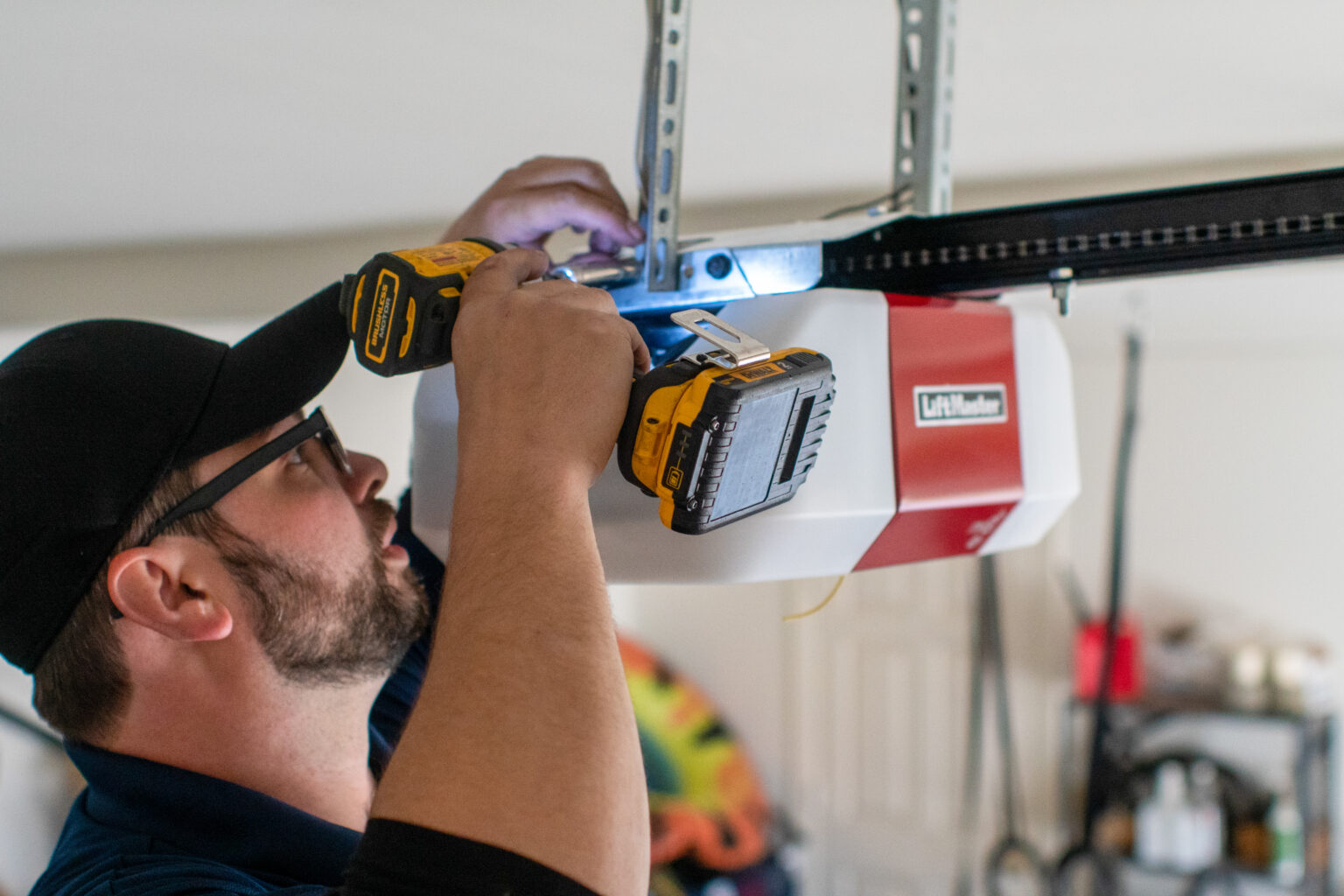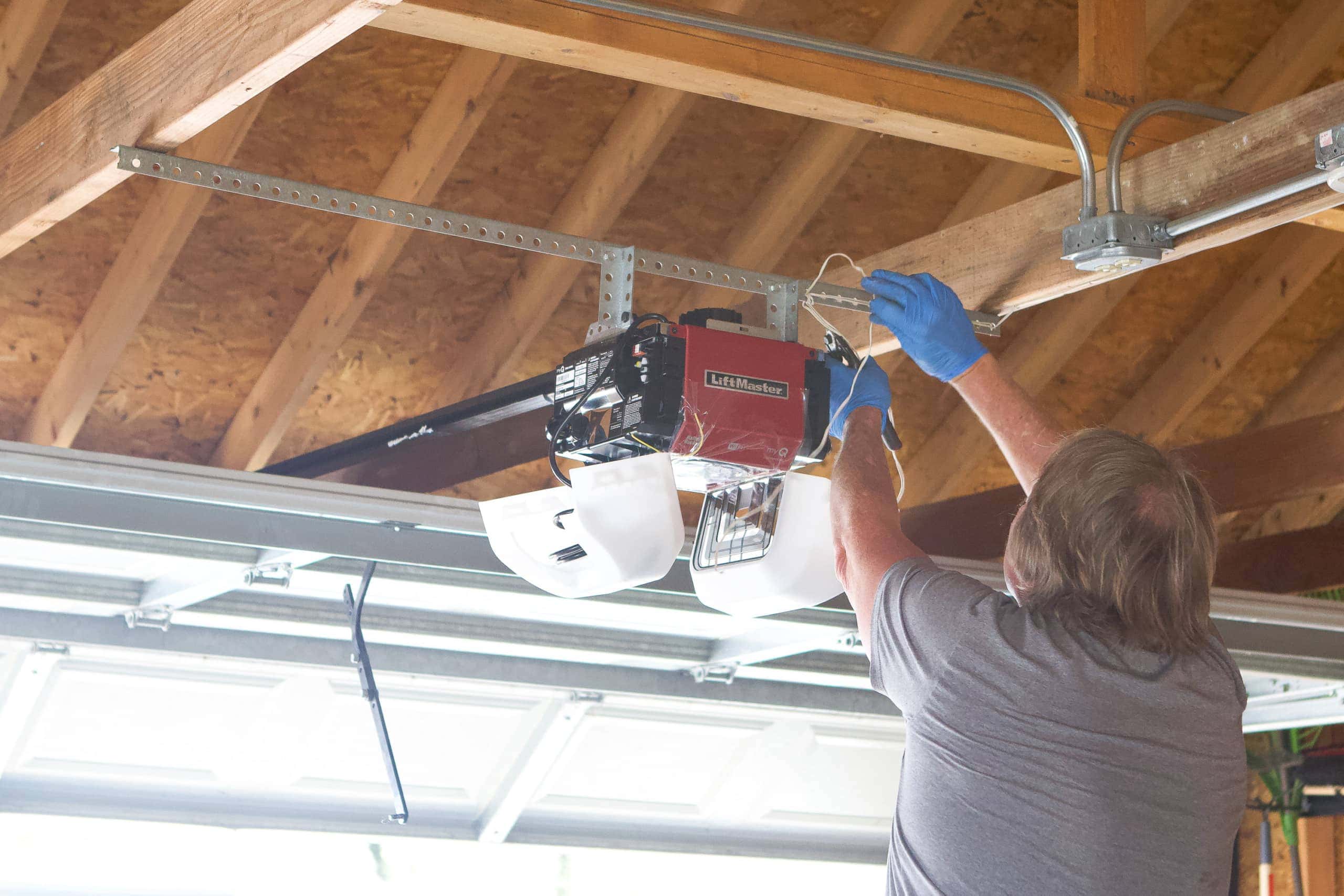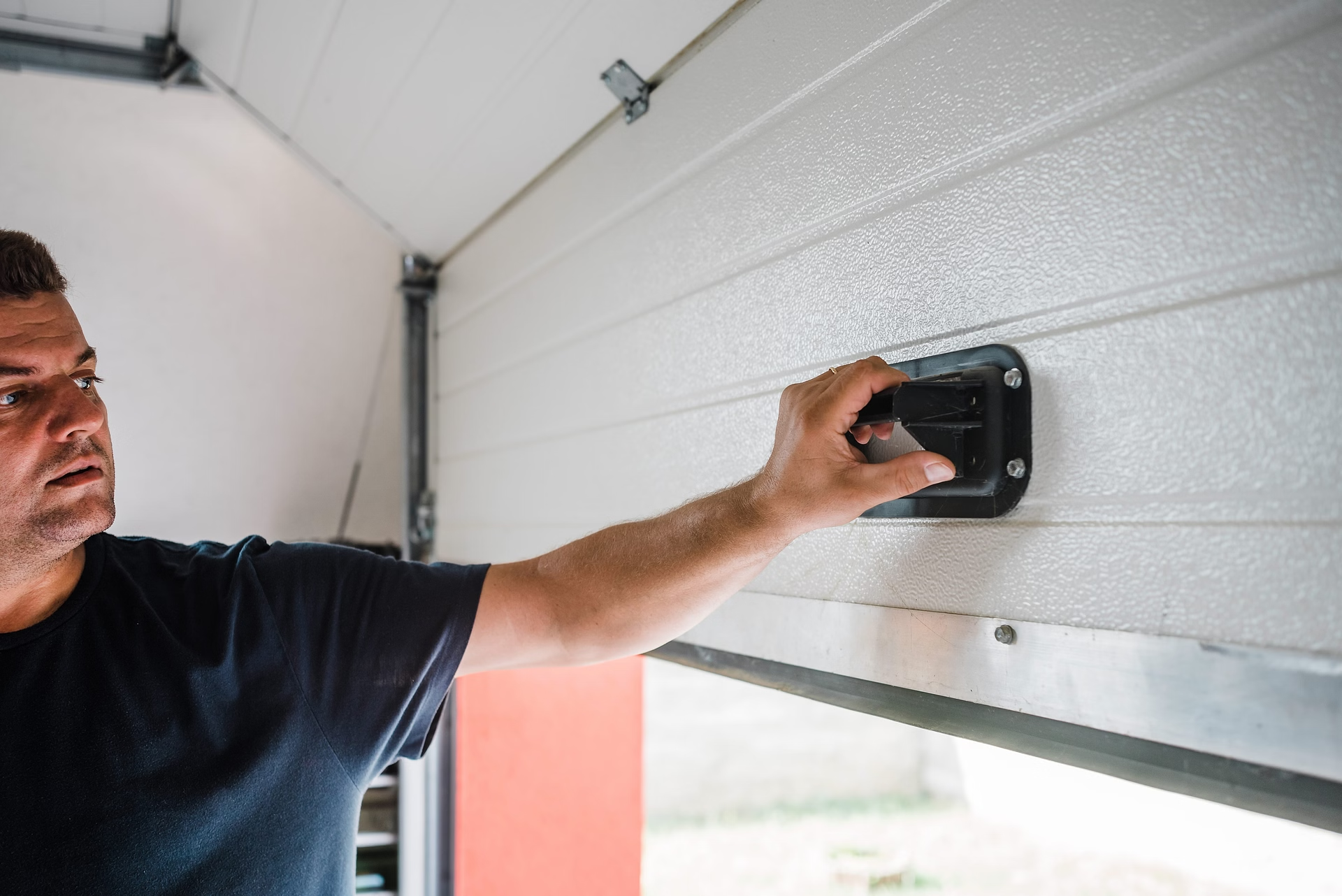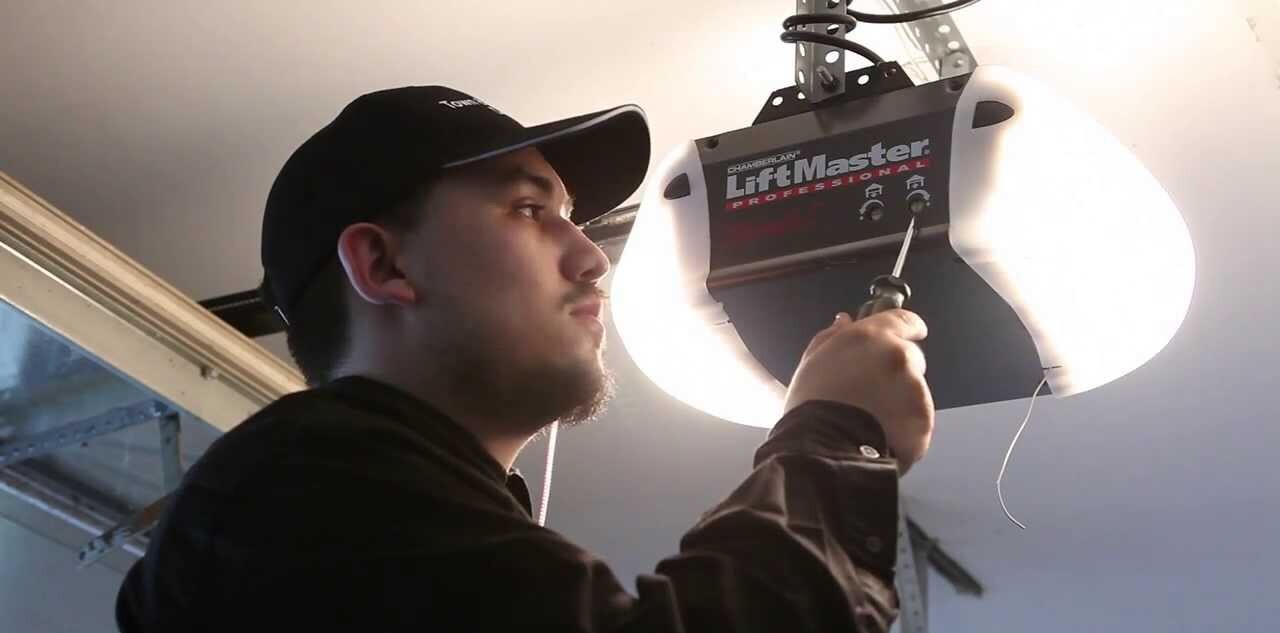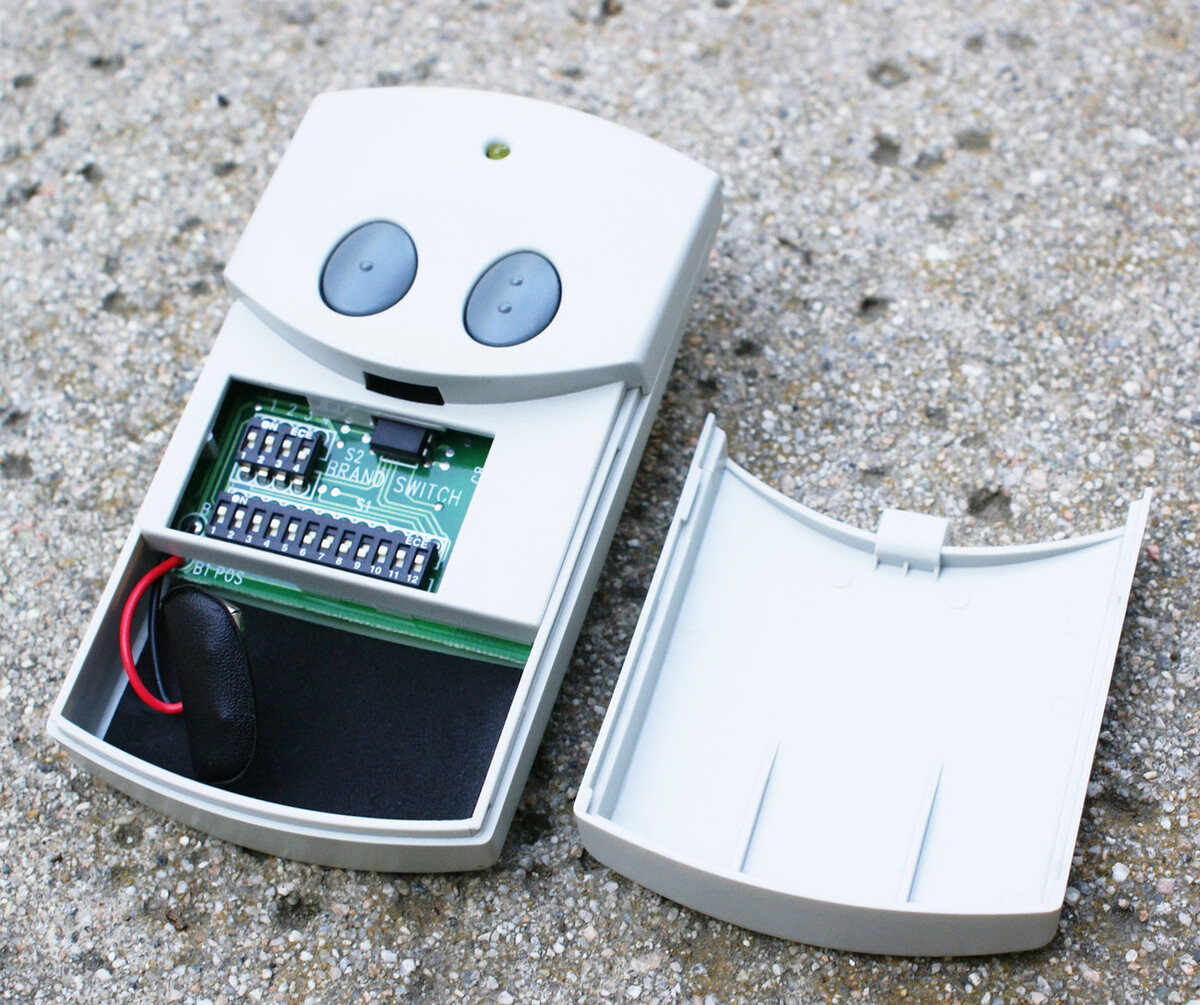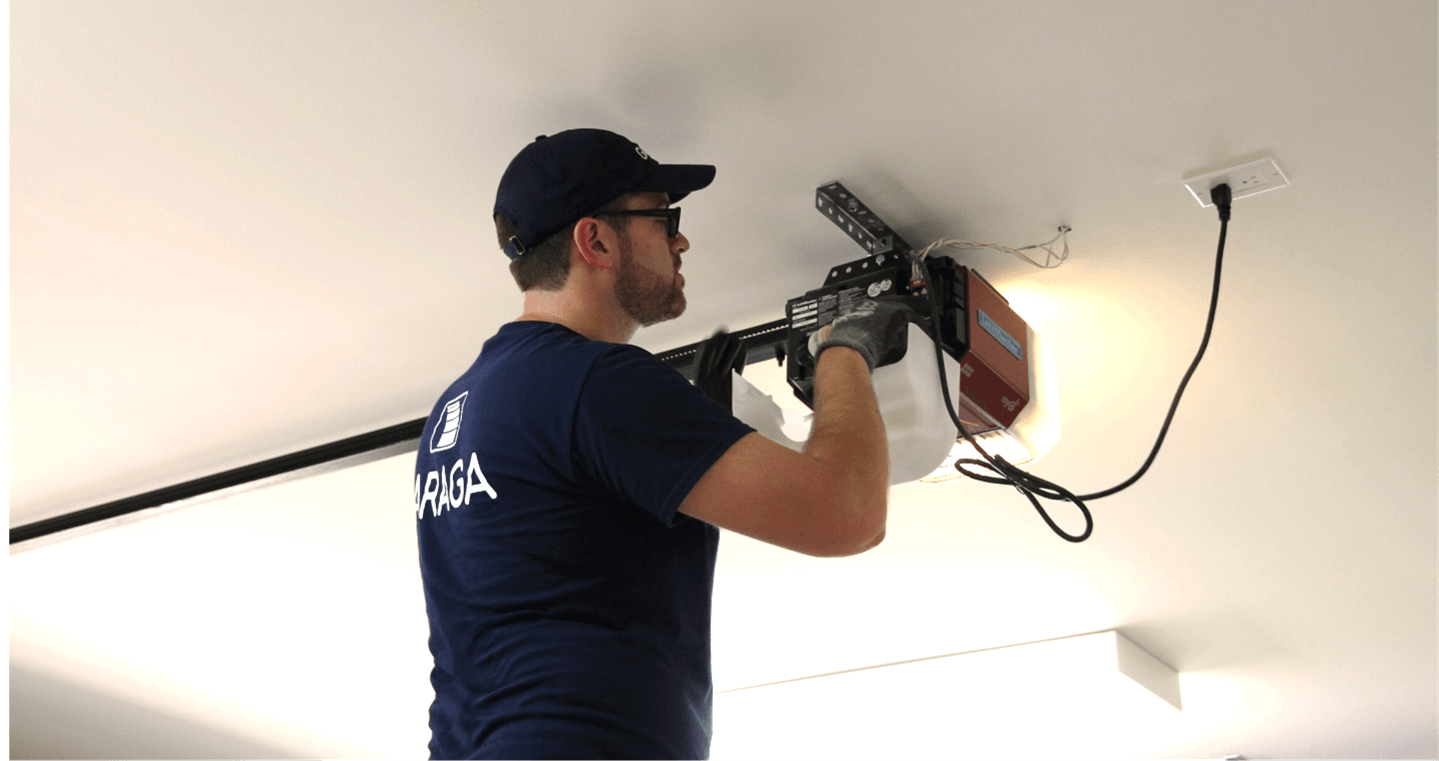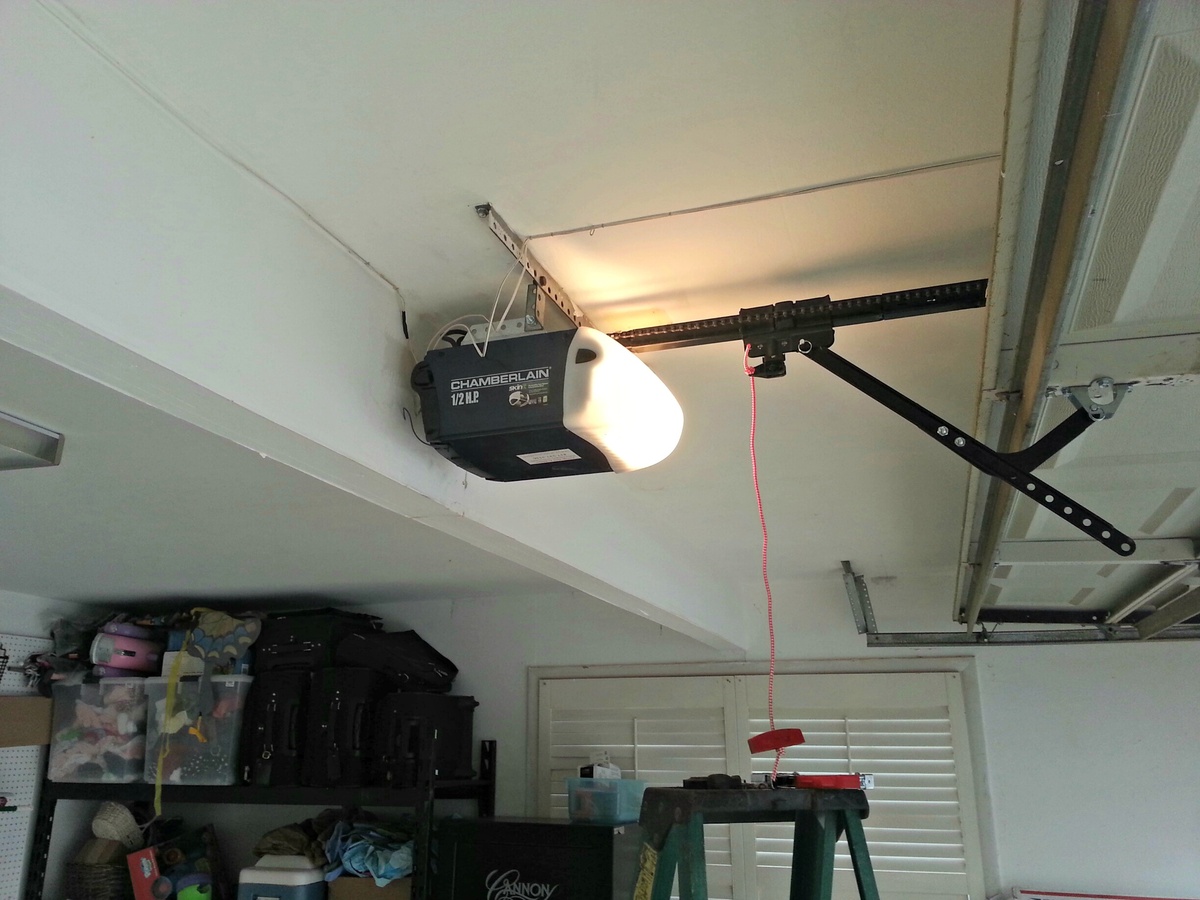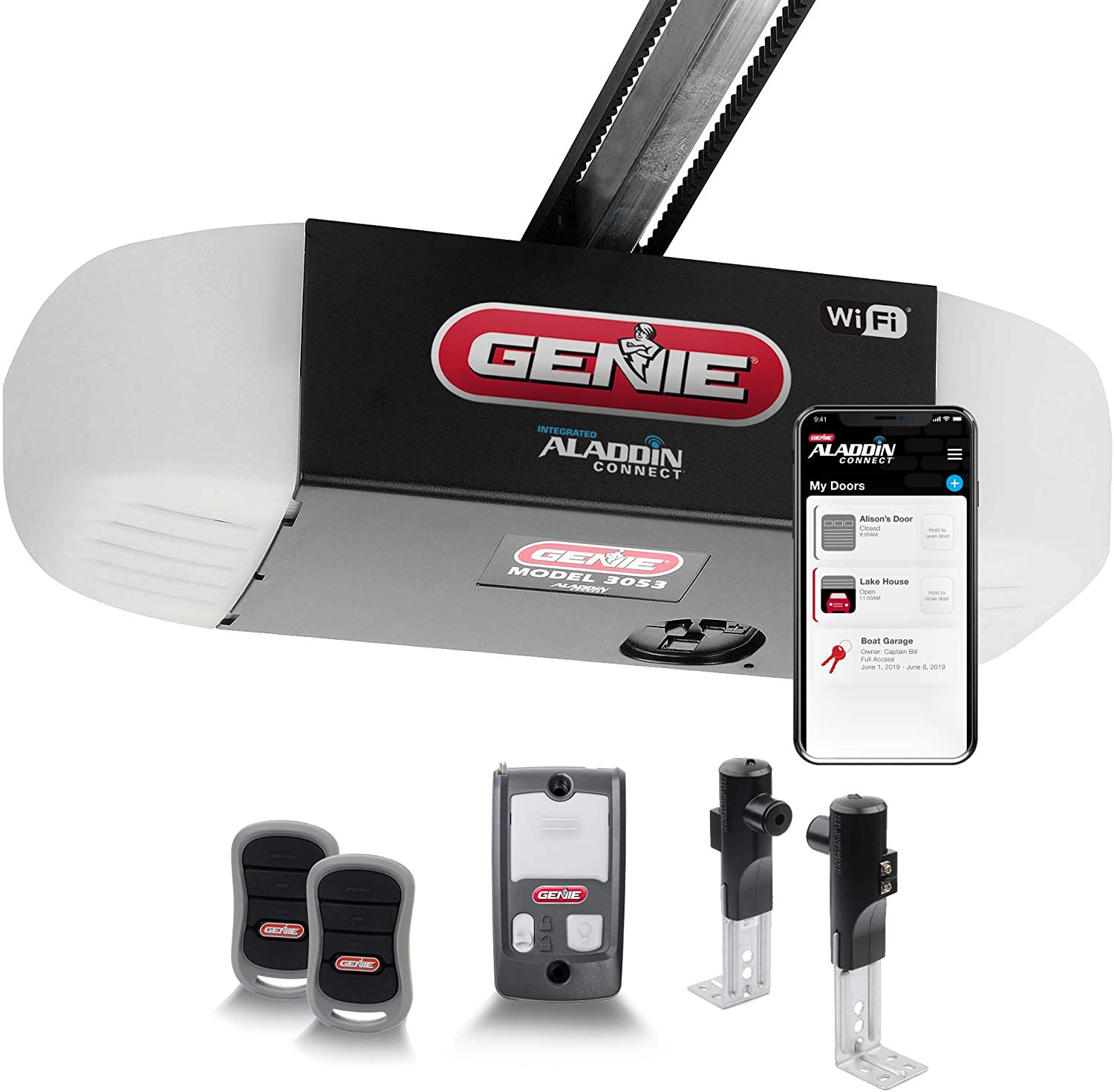Home>Home Security and Surveillance>How To Add Motion Detector To Garage Door Opener
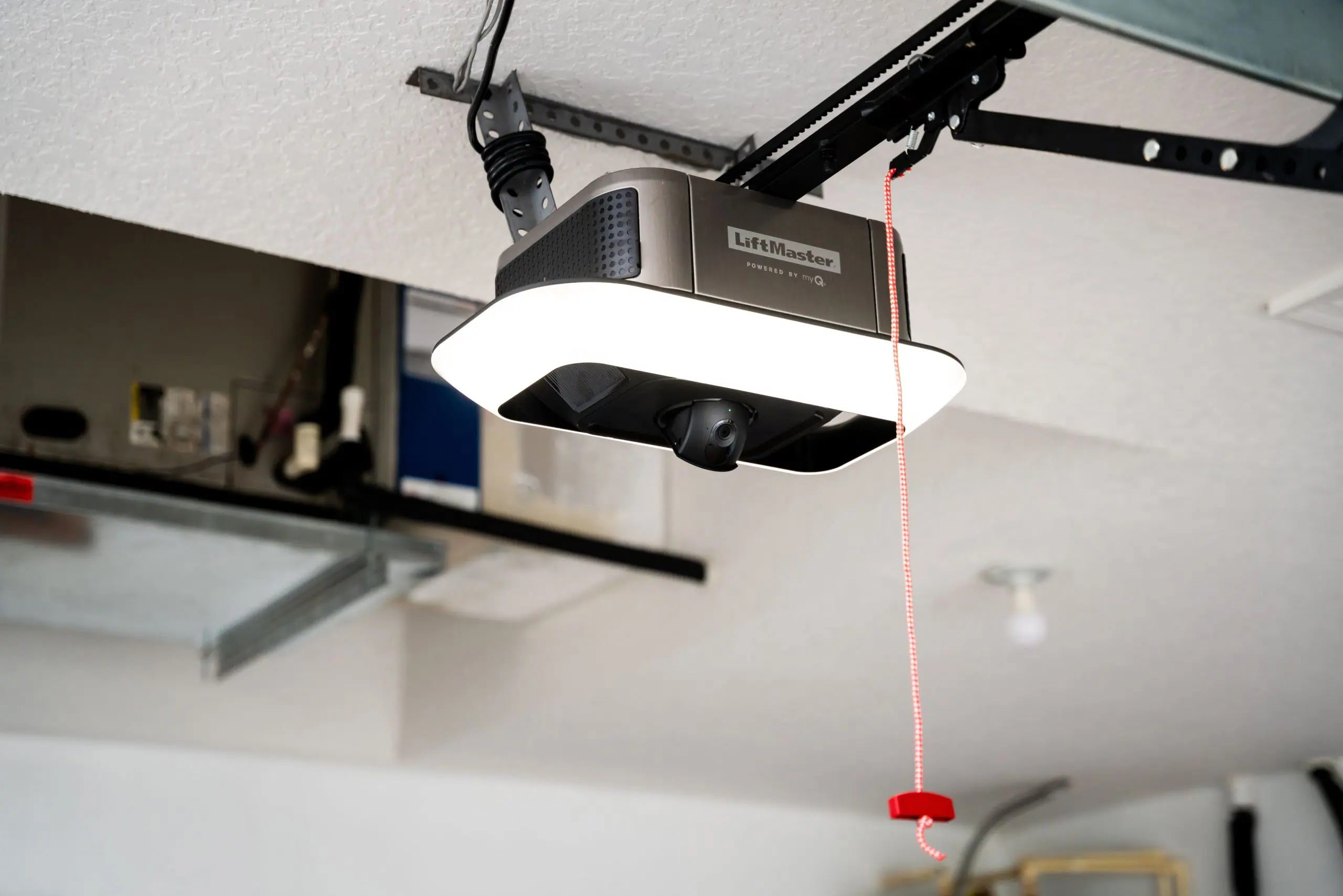

Home Security and Surveillance
How To Add Motion Detector To Garage Door Opener
Modified: March 6, 2024
Learn how to enhance your home security and surveillance by adding a motion detector to your garage door opener. Protect your property with this simple and effective DIY solution.
(Many of the links in this article redirect to a specific reviewed product. Your purchase of these products through affiliate links helps to generate commission for Storables.com, at no extra cost. Learn more)
Introduction
Welcome to our comprehensive guide on how to add a motion detector to your garage door opener. Adding a motion detector to your garage door opener is an excellent way to enhance the security and convenience of your home. By detecting any movement near your garage, the motion detector will alert you, allowing you to take appropriate action if necessary.
Garages are often an entry point for burglars, making it crucial to implement effective security measures. Traditional garage door openers lack advanced security features, but by adding a motion detector, you can significantly improve the security of your garage.
In this guide, we will walk you through the step-by-step process of adding a motion detector to your garage door opener. We will cover everything you need to know, from choosing the right motion detector to mounting it and connecting it to your garage door opener. So let’s get started!
Key Takeaways:
- Enhance your garage security and convenience by adding a motion detector to your garage door opener. It alerts you to any movement near your garage, providing real-time notifications and hands-free convenience.
- Choose a compatible motion detector, prepare your garage door opener, and securely mount and connect the detector for effective security. Regular maintenance and testing ensure reliable functionality.
Benefits of Adding a Motion Detector to Garage Door Opener
Adding a motion detector to your garage door opener offers numerous benefits, enhancing both the security and convenience of your home. Let’s explore some of the key advantages:
- Enhanced Security: A motion detector acts as an additional layer of security for your garage. It can detect any unauthorized movement around the garage, alerting you to potential intruders. This not only helps prevent break-ins but also acts as a deterrent, as burglars are less likely to target a property with visible security measures in place.
- Real-Time Notifications: With a motion detector connected to your garage door opener, you can receive real-time notifications whenever movement is detected. These notifications can be sent to your smartphone, allowing you to immediately take action if needed. Whether you’re at home or away, you’ll have peace of mind knowing that any suspicious activity near your garage will be promptly brought to your attention.
- Convenience: Adding a motion detector to your garage door opener can make your life more convenient. For example, as soon as you approach your garage, the motion detector can trigger the opening of the garage door, saving you the hassle of manually opening it. This hands-free convenience is especially beneficial when you have your hands full or in inclement weather conditions.
- Energy Savings: Many motion detectors have built-in energy-saving features. They can automatically turn off lights or other devices connected to the garage when no movement is detected for a certain period of time. This helps to reduce energy consumption and lower your utility bills.
- Customization Options: Modern motion detectors for garage door openers offer a range of customization options. You can adjust the sensitivity of the detector to prevent false alarms, set specific time windows during which the detector should be active, and even integrate it with other smart home security systems for added functionality.
By adding a motion detector to your garage door opener, you not only increase the security of your home but also enjoy added convenience and energy savings. It’s a simple yet effective way to enhance your overall home security system.
Required Tools and Materials
Before you start adding a motion detector to your garage door opener, gather the necessary tools and materials. Here is a list of what you’ll need:
- Garage Door Opener: Make sure you have a compatible garage door opener. Check the manufacturer’s specifications and ensure that your opener supports the integration of a motion detector.
- Motion Detector: Choose a motion detector that is suitable for outdoor use and compatible with your garage door opener. Look for features such as adjustable sensitivity, range, and compatibility with wireless communication protocols.
- Mounting Bracket or Tape: Depending on the motion detector model and your garage door opener, you may require a mounting bracket or a strong tape to securely attach the detector to the desired location.
- Power Supply: Some motion detectors require a power supply, which may include batteries or a wired connection. Check the requirements of your chosen motion detector and ensure you have the necessary power supply options available.
- Screwdriver or Drill: You may need a screwdriver or a drill to mount the motion detector or remove existing cover plates on your garage door opener.
- Wire or Wire Connectors (if required): Depending on the model of your motion detector and garage door opener, you may need wires or wire connectors to establish a connection between them. Refer to the installation instructions for your specific products.
Before you begin the installation process, double-check that you have all the necessary tools and materials. This will ensure a smooth and efficient installation of the motion detector to your garage door opener.
Step 1: Choose the Right Motion Detector
Choosing the right motion detector is crucial to ensure proper functionality and compatibility with your garage door opener. Here are some key factors to consider when selecting a motion detector:
- Compatibility: Check if the motion detector is compatible with your specific garage door opener model. Refer to the manufacturer’s documentation or consult with a professional if you’re unsure.
- Outdoor Rating: Make sure the motion detector is suitable for outdoor use. Look for a high IP (Ingress Protection) rating, indicating resistance to dust and water. This is important to ensure the longevity and reliability of the detector, even in different weather conditions.
- Sensitivity and Range: Consider the sensitivity and range of the motion detector. The sensitivity determines how easily the detector will be triggered by motion, while the range determines how far it can detect movement. Adjustability in these settings can help prevent false alarms and ensure accurate detection.
- Power Options: Determine the power requirements of the motion detector. Some detectors operate on batteries, while others require a wired power connection. Choose a power option that suits your preference and the available resources in your garage.
- Additional Features: Consider any additional features or compatibility with other smart home security systems. For example, some motion detectors can integrate with smart home hubs or be controlled wirelessly through a mobile app. These features can enhance the overall functionality and convenience of the motion detector.
Research different motion detector models, read customer reviews, and compare their specifications to find the best fit for your needs. Once you have selected the right motion detector, proceed to the next step of preparing your garage door opener for installation.
Step 2: Prepare the Garage Door Opener
Before connecting the motion detector to your garage door opener, it’s important to properly prepare the opener. This involves a few simple steps to ensure a smooth installation process:
- Turn off the Power: Begin by unplugging or disconnecting the power supply to your garage door opener. This step ensures your safety and prevents any accidental activation of the opener during the installation process.
- Locate the Terminal Connections: Open the cover of your garage door opener to access the terminal connections. These connections are typically located near the control panel or circuit board of the opener.
- Identify the Trigger Terminal: Look for the terminal labeled “trigger” or “external activation.” This is the terminal that will be used to connect the motion detector to your garage door opener.
- Remove the Cover Plate (if necessary): In some cases, you may need to remove a cover plate from the garage door opener to access the terminal connections. Use a screwdriver or drill to carefully remove the cover plate, following the manufacturer’s instructions.
- Inspect the Wiring: Take a moment to inspect the existing wiring and terminal connections. Ensure that the wiring is in good condition and securely connected. If you notice any loose or damaged wiring, it’s important to address the issue before proceeding.
- Note: Consult the Manual: If you’re unsure about any of the steps or need specific instructions for your garage door opener model, refer to the manufacturer’s manual or installation guide. These resources can provide valuable guidance and ensure a proper installation.
By properly preparing your garage door opener, you create a secure and accessible connection point for the motion detector. With the opener ready, you can now move on to the next step of mounting the motion detector in the appropriate location.
You can add a motion detector to your garage door opener by purchasing a compatible motion sensor and following the installation instructions provided. Make sure to place the sensor in a location where it can detect movement effectively.
Read more: How To Open A Motion Detector
Step 3: Mount the Motion Detector
Once you have prepared your garage door opener, it’s time to mount the motion detector in the desired location. Follow these steps to ensure a secure and effective mounting:
- Choose the Mounting Location: Consider the optimal placement for your motion detector. Look for a position that provides a wide view of the garage area and any potential points of entry. Mount the detector high enough to avoid obstacles or tampering, but not too high as to compromise its detection capabilities.
- Secure the Mounting Bracket: If your motion detector comes with a mounting bracket, follow the manufacturer’s instructions to attach it to the desired location. Ensure that the bracket is securely fastened with screws or other appropriate hardware.
- Use a Strong Mounting Tape: If your motion detector does not require a bracket, you can use a strong adhesive mounting tape instead. Clean the mounting surface thoroughly and apply the adhesive tape to the back of the motion detector. Press it firmly against the chosen location, ensuring a secure attachment.
- Adjust the Angle: Once the motion detector is mounted, adjust its angle to optimize the detection area. Most detectors feature an adjustable bracket or swivel mount, allowing you to fine-tune the angle and coverage. Refer to the instructions provided with your motion detector for guidance on adjusting the angle.
- Confirm Stability: Ensure that the motion detector is securely mounted and stable. Give it a gentle shake and check for any movement or looseness. A stable mount is essential for accurate motion detection and reliable performance.
- Consider Multiple Detectors: Depending on the size and layout of your garage, it may be beneficial to install multiple motion detectors. Strategically position additional detectors in areas that may be blind spots or require extra coverage to maximize the overall security of your garage.
By securely mounting the motion detector, you’ll ensure proper function and coverage. With the detector in place, you can now proceed to the next step of connecting it to your garage door opener.
Step 4: Connect the Motion Detector to the Garage Door Opener
After mounting the motion detector, the next step is to establish the necessary connections between the detector and your garage door opener. Follow these steps to properly connect the two:
- Identify the Trigger Terminal: Refer back to Step 2 and locate the trigger terminal on your garage door opener. This is the terminal that will receive the input from the motion detector.
- Wire or Connect the Motion Detector: Depending on the model and requirements of your motion detector, you may need to wire it to the trigger terminal of the garage door opener. Consult the installation instructions provided with your motion detector for specific wiring requirements and proper configuration.
- If using wires: Strip the ends of the wires that came with the motion detector, exposing a small amount of wire. Insert one end of the wire into the trigger terminal on the garage door opener and secure it firmly by tightening the screw. Connect the other end of the wire to the corresponding terminal on the motion detector, making sure it is securely attached. Repeat this process if there are multiple wires.
- If using wire connectors: Follow the instructions provided with your motion detector to properly connect it to the trigger terminal of the garage door opener using wire connectors. Simply insert the wires from the motion detector and the opener into the corresponding connectors, ensuring a secure connection.
- Double-Check the Connections: Once you have connected the motion detector to the garage door opener, double-check that all connections are secure and properly configured. Ensure that the wires or connectors are tightly fastened and that there is no exposed wiring.
- Restore Power and Test: Once the connections are in place, restore the power to the garage door opener by plugging it back in or reconnecting the power supply. With the power restored, test the motion detector by activating its detection capabilities. Walk within the sensor’s range and observe if the garage door opener responds accordingly.
It is important to refer to the installation instructions provided with your specific motion detector and garage door opener for any model-specific requirements or guidelines. Following these steps will ensure a proper connection between the motion detector and your garage door opener for effective security and convenience.
Step 5: Test the Motion Detector
Once you have connected the motion detector to your garage door opener, it’s time to test its functionality to ensure that it is working properly. Follow these steps to perform a thorough test of the motion detector:
- Position Yourself: Stand near the detection range of the motion detector, ensuring that you are within its field of view. Make sure there are no obstructions blocking the detector’s line of sight.
- Trigger Motion: Wave your hand or walk within the detection zone of the motion detector. The detector should quickly detect your movement and send a signal to the garage door opener.
- Observe the Garage Door Opener: Watch the behavior of the garage door opener closely. It should respond to the motion detected by the motion detector by activating the opening or closing mechanism. This confirms that the connection between the detector and the opener is functioning correctly.
- Repeat the Test: Perform the motion test from various angles and positions within the detection range to ensure that the motion detector responds consistently and accurately. If you notice any inconsistencies or issues, double-check the connections and sensitivity settings of the motion detector.
- Adjust Sensitivity (if necessary): Depending on your specific needs and environment, you may need to adjust the sensitivity settings of the motion detector. Refer to the manufacturer’s instructions for guidelines on adjusting the sensitivity to avoid false alarms or ensure accurate detection.
- Test at Different Times: It is also recommended to test the motion detector at different times of the day or night. This will ensure that the detector works reliably in various lighting conditions and that it doesn’t trigger false alarms due to changes in lighting or other external factors.
By performing a thorough test of the motion detector, you can ensure that it is functioning correctly and communicating effectively with the garage door opener. If any issues persist, refer to the troubleshooting section of the motion detector’s manual or consult with a professional for further assistance.
Additional Tips and Considerations
As you add a motion detector to your garage door opener, there are a few additional tips and considerations to keep in mind for optimal performance and security:
- Regular Maintenance: Periodically clean the motion detector to remove any dirt, dust, or debris that may hinder its functionality. This will help maintain accurate detection and improve overall performance.
- Adjust Detection Range and Sensitivity: Depending on your specific needs, you may need to adjust the detection range and sensitivity settings of the motion detector. Experiment with different settings to find the right balance between accurate detection and minimizing false alarms.
- Combine with Other Security Measures: While a motion detector is a valuable addition to your garage security, it’s important to consider other security measures as well. This may include installing security cameras, reinforcing garage doors, or integrating the motion detector with an alarm system for enhanced protection.
- Notify Authorities (if applicable): If your motion detector is connected to a professional monitoring service, ensure that you have their contact information and that they are notified in the event of a triggered motion detection. This increases the effectiveness of the security system and can expedite emergency response if needed.
- Keep Batteries Fresh (if applicable): If your motion detector operates on batteries, be sure to monitor their life and replace them as needed. Low battery power can affect the performance of the detector, leading to reduced detection range or false alarms.
- Stay Informed: Stay up to date with the latest advancements in motion detection technology and security measures. New features and improvements may become available that can further enhance the security and convenience of your garage.
By following these tips and considerations, you can maximize the effectiveness of your motion detector and create a secure environment for your garage. Remember to regularly check, test, and maintain your motion detector to ensure its proper function over time.
Read more: How To Add Sound To Motion Detector
Conclusion
Congratulations! You have successfully learned how to add a motion detector to your garage door opener. By incorporating this additional security feature, you have taken an important step towards enhancing the safety and convenience of your home.
A motion detector serves as a valuable tool to detect any unauthorized movement near your garage, providing real-time notifications and allowing you to take immediate action if needed. This added layer of security can deter potential intruders and give you peace of mind knowing that your garage is well-protected.
Throughout this guide, we covered the essential steps, from choosing the right motion detector to mounting it, connecting it to your garage door opener, and testing its functionality. Remember to select a motion detector that is compatible with your garage door opener, consider its outdoor rating, sensitivity, range, and power options.
Properly preparing your garage door opener, positioning and securely mounting the motion detector, connecting the wiring or wire connectors, and conducting thorough testing ensure a reliable and accurate motion detection system.
Additionally, we provided some additional tips and considerations to keep in mind, such as regular maintenance, adjusting detection settings, combining with other security measures, and staying informed about new advancements in motion detection technology.
By following these guidelines and considering these tips, you can create a secure and efficient home security system that includes your garage. Protecting your property and loved ones is of utmost importance, and adding a motion detector to your garage door opener is an excellent step towards achieving that goal.
We hope this guide has been helpful in assisting you in adding a motion detector to your garage door opener. Remember, always prioritize safety and consult the manufacturer’s instructions or seek professional assistance if you encounter any difficulties during the installation process. Stay vigilant, and enjoy the enhanced security and convenience that your newly installed motion detector provides!
Frequently Asked Questions about How To Add Motion Detector To Garage Door Opener
Was this page helpful?
At Storables.com, we guarantee accurate and reliable information. Our content, validated by Expert Board Contributors, is crafted following stringent Editorial Policies. We're committed to providing you with well-researched, expert-backed insights for all your informational needs.
